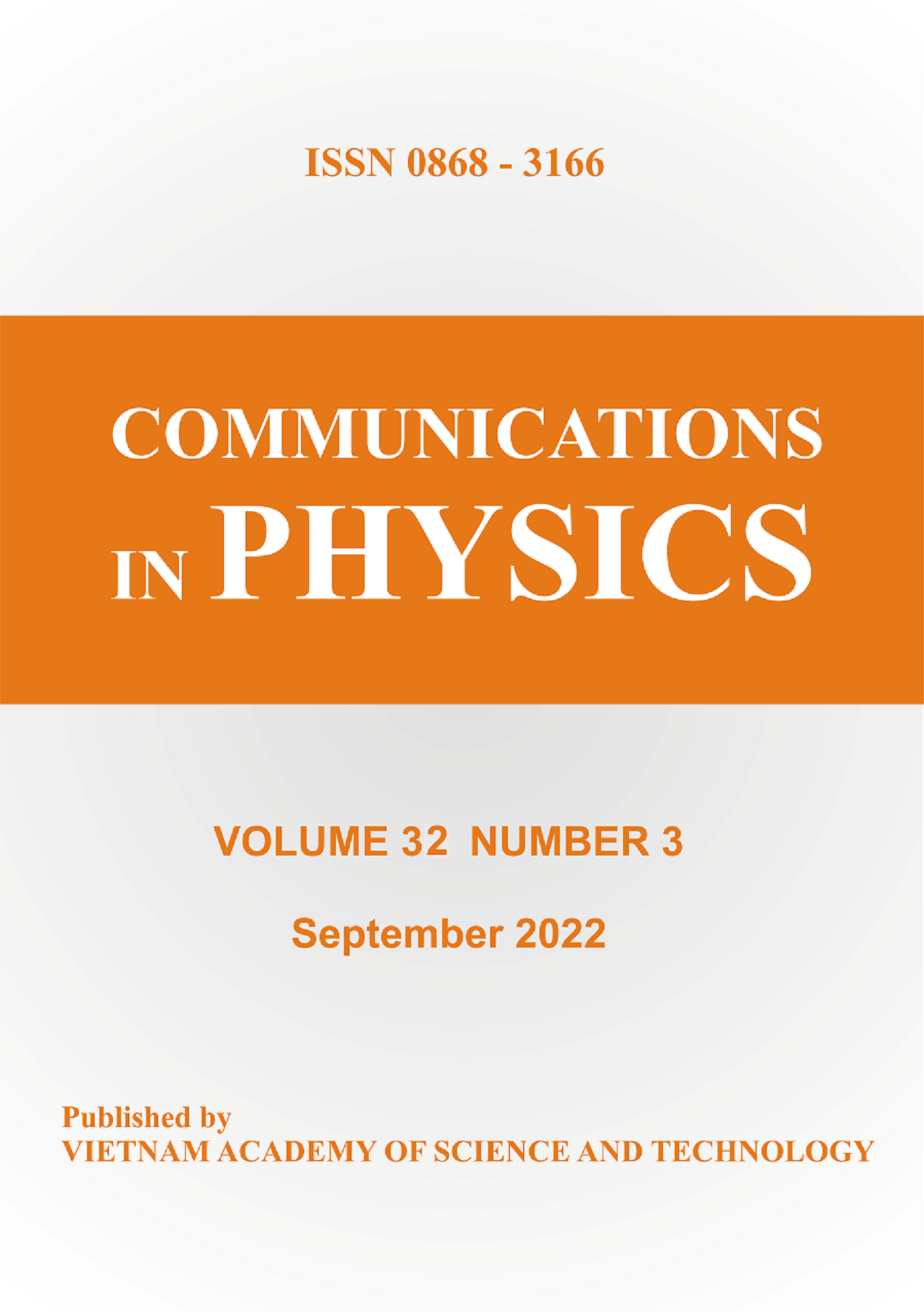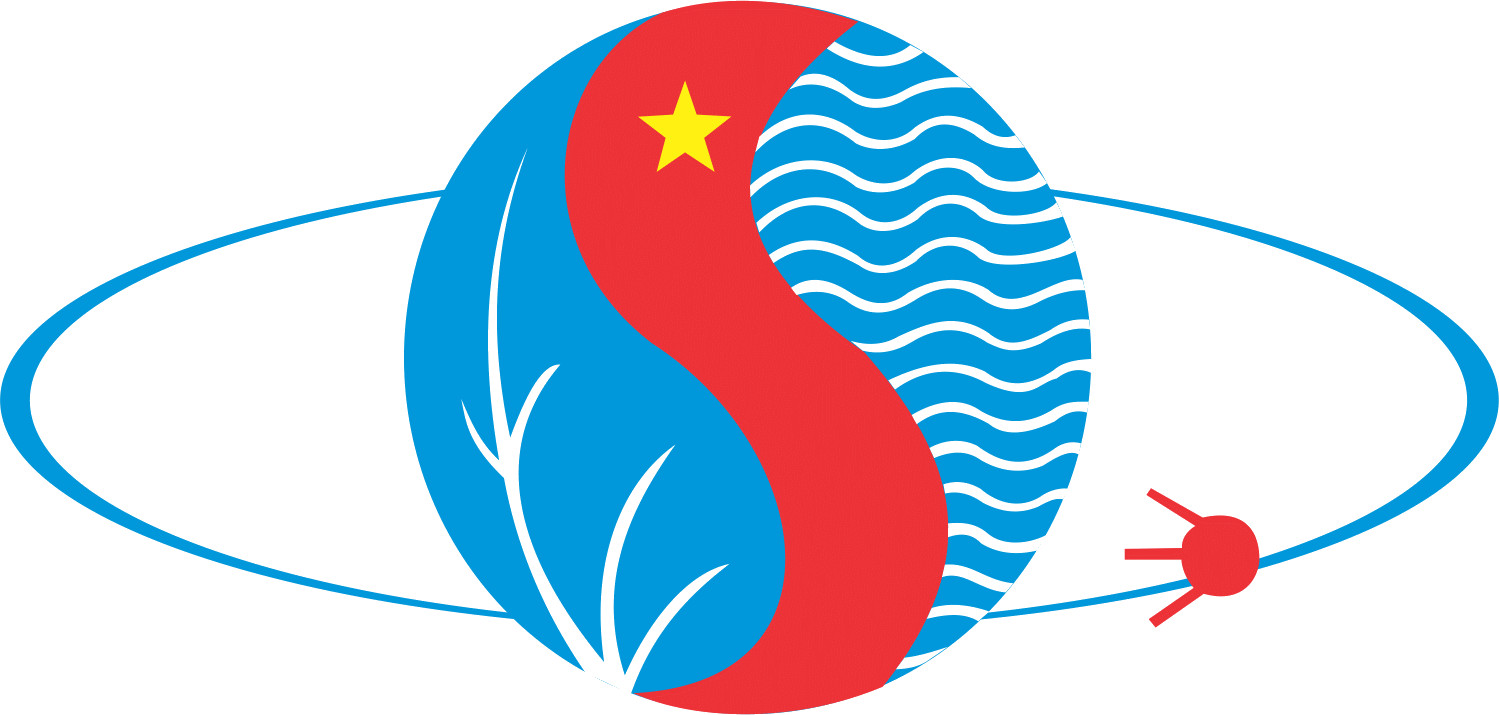Optimal Carrier Concentration for High Thermoelectric Performance of Lead Substituted Bismuth Telluride in p-Type Doping
Author affiliations
DOI:
https://doi.org/10.15625/0868-3166/28/2/11800Keywords:
First-principles calculation, thermoelectric materials, p-type doping PbBi4Te7, electronic thermal conductivity.Abstract
Bi\(_{2}\)Te\(_{3}\) and its alloys are the well-known state-of-the-art thermoelectric materials operating at around room temperature. With lead substituted, the newly formed quasi-binary compound PbBi\(_{4}\)Te\(_{7}\), shows relatively high electrical conductivity and Seebeck coefficient. In this report, we employed the solution of the Boltzmann Transport Equation in a constant relaxation-time approximation within a first-principles density-functional-theory calculation to explore the role of the electronic thermal conductivity, \(\kappa _{e}\), on the thermoelectric performance of the compound with p-type doping. Results show that \(\kappa _{e}\) increases drastically with the increases of both temperature and carrier concentration. Even the power factor has been found to be markedly improved with the increase of the carrier concentration, a rapid increase of \(\kappa _{e}\) emerges as a big hindrance to improve the dimensionless figure of merit, ZT, of the compound. This is responsible for the limit of ZT. The larger ZT is found in low temperatures and carrier concentrations. The highest ZT of about 0.48 occurs at 223 K and at the carrier concentration of \(6\times 10^{17}\)cm\(^{ - 3}\). At room temperature the maximum ZT is slightly smaller. We demonstrated that at a particular temperature to maximize the thermoelectric performance of the compound, the carrier concentration must be optimized. Results show that the compound with p-type doping is a promising thermoelectric materials operating at around room temperature.Downloads
Metrics
References
G. Chen, M.S. Dresselhaus, G. Dresselhaus, J.-P. Fleurial, T. Caillat, Int. Mater. Rev. 48 (2013).
![]()
T. Takabatake, K. Suekuni, T. Nakayama, E. Kaneshita, Rev. Mod. Phys. 86 (2014) 669–716.
DOI: https://doi.org/10.1103/RevModPhys.86.669
![]()
X. Zhang, L.-D. Zhao, J. Mater. 1 (2015) 92–105.
DOI: https://doi.org/10.1016/j.jmat.2015.01.001
![]()
G.J. Snyder, E.S. Toberer, Nat. Mater. 7 (2008) 105–114.
DOI: https://doi.org/10.1038/nmat2090
![]()
R. Venkatasubramanian, E. Siivola, T. Colpitts, B. O’Quinn, Nature 413 (2001) 597–602.
DOI: https://doi.org/10.1038/35098012
![]()
T. Van Quang, M. Kim, J. Appl. Phys. 120 (2016) 195105.
DOI: https://doi.org/10.1063/1.4967989
![]()
A. Bulusu, D.G. Walker, Superlattices Microstruct. 44 (2008) 1–36.
DOI: https://doi.org/10.1016/j.spmi.2008.02.008
![]()
C. Gayner, K.K. Kar, Prog. Mater. Sci. 83 (2016) 330–382.
DOI: https://doi.org/10.1016/j.pmatsci.2016.07.002
![]()
T. Van Quang, M. Kim, J. Appl. Phys. 113 (2013) 17A934.
DOI: https://doi.org/10.1063/1.4795743
![]()
T. Van Quang, M. Kim, IEEE Trans. Magn. 50 (2014) 1000904.
DOI: https://doi.org/10.1109/TMAG.2013.2279854
![]()
K. Hoang, S.D. Mahanti, M.G. Kanatzidis, Phys. Rev. B 81 (2010) 115106.
DOI: https://doi.org/10.1103/PhysRevB.81.119904
![]()
M.K. Zhitinskaya, S.A. Nemov, A.A. Muhtarova, L.E. Shelimova, T.E. Svechnikova, P.P. Konstantinov, Semiconductors 44 (2010) 729–733.
DOI: https://doi.org/10.1134/S1063782610060072
![]()
T. Van Quang, K. Miyoung, J. Korean Phys. Soc. 68 (2016) 393–397.
DOI: https://doi.org/10.3938/jkps.68.393
![]()
L. Zhang, D.J. Singh, Phys. Rev. B 81 (2010) 245119.
DOI: https://doi.org/10.1103/PhysRevE.81.056601
![]()
V.L. Kuznetsov, L.A. Kuznetsova, D.M. Rowe, J. Phys. D. Appl. Phys. 34 (2001) 700–703.
DOI: https://doi.org/10.1088/0022-3727/34/5/306
![]()
L.E. Shelimova, T.E. Svechnikova, P.P. Konstantinov, O.G. Karpinskii, E.S. Avilov, M. a. Kretova, V.S. Zemskov, Inorg. Mater. 43 (2007) 125–131.
DOI: https://doi.org/10.1134/S0020168507020057
![]()
M.K. Zhitinskaya, S.A. Nemov, N.M. Blagih, L.E. Shelimova, T.E. Svechnikova, Semiconductors 46 (2012) 1256–1262.
DOI: https://doi.org/10.1134/S1063782612100211
![]()
L.E. Shelimova, O.G. Karpinskii, P.P. Konstantinov, E.S. Avilov, M.A. Kretova, V.S. Zemskov, Inorg. Mater. 40 (2004) 451–460.
DOI: https://doi.org/10.1023/B:INMA.0000027590.43038.a8
![]()
L.E. Shelimova, O.G. Karpinskii, P.P. Konstantinov, M.A. Kretova, E.S. Avilov, V.S. Zemskov, Inorg. Mater. 38 (2002) 790–794.
DOI: https://doi.org/10.1023/A:1019722726551
![]()
V.S. Zemskov, L.E. Shelimova, P.P. Konstantinov, E.S. Avilov, M. a. Kretova, I.Y. Nikhezina, Inorg. Mater. Appl. Res. 3 (2012) 61–68.
DOI: https://doi.org/10.1134/S2075113312010133
![]()
P.P. Konstantinov, L.E. Shelimova, E.S. Avilov, M.A. Kretova, J.-P. Fleurial, J. Solid State Chem. 146 (1999) 305–312.
DOI: https://doi.org/10.1006/jssc.1999.8340
![]()
F.N. Guseinov, M.B. Babanly, V.P. Zlomanov, Y.A. Yusibov, Russ. J. Inorg. Chem. 57 (2012) 1387–1392.
DOI: https://doi.org/10.1134/S0036023612100063
![]()
M.B. Babanly, A. V. Shevel’kov, F.N. Guseinov, D.M. Babanly, Inorg. Mater. 47 (2011) 712–716.
DOI: https://doi.org/10.1134/S002016851107003X
![]()
I.I. Petrov, R.M. Imamov, Sov. Phys. Crystallogr. 14 (1969) 699.
![]()
Y. Imai, A. Watanabe, Intermetallics 11 (2003) 451–458.
DOI: https://doi.org/10.1016/S0966-9795(03)00019-0
![]()
G.D. Mahan, J.O. Sofo, Proc. Natl. Acad. Sci. U. S. A. 93 (1996) 7436–7439.
DOI: https://doi.org/10.1073/pnas.93.15.7436
![]()
J.L.P. Hughes, J.E. Sipe, Phys. Rev. B 53 (1996) 10751–10763.
DOI: https://doi.org/10.1103/PhysRevB.53.10751
![]()
M.S. Park, J.H. Song, J.E. Medvedeva, M. Kim, I.G. Kim, A.J. Freeman, Phys. Rev. B 81 (2010) 155211.
DOI: https://doi.org/10.1103/PhysRevB.81.155211
![]()
T. Van Quang, M. Kim, J. Appl. Phys. 122, 122 (2017) 245104.
DOI: https://doi.org/10.1063/1.5006233
![]()
T. Quang, H. Lim, M. Kim, J. Korean Phys. Soc. 61 (2012) 1728–1731.
DOI: https://doi.org/10.3938/jkps.61.1728
![]()
T. Thonhauser, T.J. Scheidemantel, J.O. Sofo, Appl. Phys. Lett. 85 (2004) 588–590.
DOI: https://doi.org/10.1063/1.1775286
![]()
G. V. Chester, A. Thellung, Proc. Phys. Soc. 77 (1961) 1005–1013.
DOI: https://doi.org/10.1088/0370-1328/77/5/309
![]()
Downloads
Published
How to Cite
Issue
Section
License
Authors who publish with CIP agree with the following terms:- The manuscript is not under consideration for publication elsewhere. When a manuscript is accepted for publication, the author agrees to automatic transfer of the copyright to the editorial office.
- The manuscript should not be published elsewhere in any language without the consent of the copyright holders. Authors have the right to enter into separate, additional contractual arrangements for the non-exclusive distribution of the journal’s published version of their work (e.g., post it to an institutional repository or publish it in a book), with an acknowledgement of its initial publication in this journal.
- Authors are encouraged to post their work online (e.g., in institutional repositories or on their websites) prior to or during the submission process, as it can lead to productive exchanges or/and greater number of citation to the to-be-published work (See The Effect of Open Access).
Accepted 08-05-2018
Published 17-07-2018













